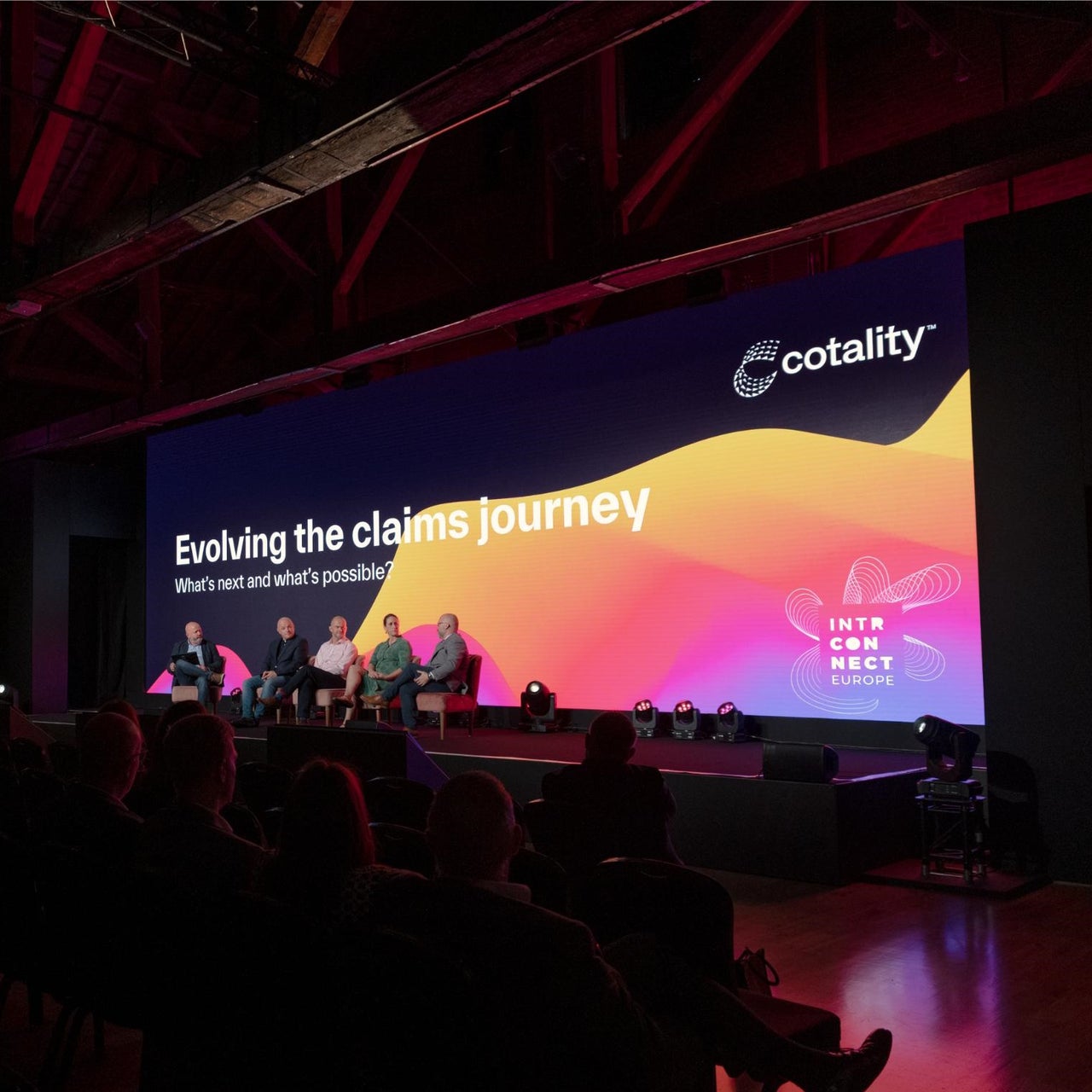
Why are tech partnerships more important than ever in insurance?
Tech partnerships have never been more critical in insurance, especially as the industry continues its shift from legacy on-premise systems to agile, cloud-based ecosystems.
In the past, insurers relied on monolithic integrations—slow to build, hard to scale, and often disconnected from evolving customer needs. Today, cloud vendors have a responsibility to ensure their platforms are not only open but connectable.
Claims require a wide range of capabilities—from video support and AI-driven assessments to fraud detection and customer communication. No single vendor can do it all. That’s why strong partnerships matter: they bring together deep expertise and solutions that fit naturally into existing workflows.
Instead of reinventing the wheel, insurance teams can focus on what truly matters—serving policyholders, resolving claims efficiently, and building trust. Partnerships are the foundation of modern insurance innovation.
What makes the collaboration between SightCall and Cotality unique or effective?
What makes the collaboration between SightCall and Cotality unique is the depth of our relationship—nearly a decade of working side by side. Over that time, we’ve developed a mutual understanding of each other’s strengths, which allows us to operate with trust, speed, and precision.
Our teams are deeply aligned in how we work: we’re both focused on delivering results and exceptional service. That alignment translates into real value for our customers. Instead of navigating the complexity of multiparty engagements—where responsibilities can blur and innovation stalls—our partnership offers a unified experience.
What are some of the biggest opportunities you see for improving claims experiences with remote technology?
One of the biggest opportunities for improving the claims experience with remote technology is meeting customers where they are—both literally and figuratively. Today’s policyholders don’t want to wait days for an adjuster to visit their home. In fact, having someone physically enter their space can feel more intrusive than a quick, secure video call. This marks a big shift in expectations.
We live in a mobile-first world where immediacy is the norm. Remote technology—especially video—has evolved from a novelty to a necessity. It allows insurers to assess damage quickly, accurately, and with minimal disruption to the customer’s life. What used to take days can now happen in minutes, without sacrificing quality or empathy.
But this isn’t just about efficiency—it’s about delivering the kind of experience customers now expect.
SightCall’s technology has a direct impact on speed and transparency. How have you seen this play out in insurance claims environments?
We’ve seen SightCall’s technology make a profound difference in the insurance claims process. With live video, claims that once took nearly two weeks can now be resolved in just over a day. In one case, an adjuster closed a claim in under 20 minutes—without ever leaving their desk. That kind of speed simply wasn’t possible before.
Video fosters collaboration and transparency. It enables a real-time dialogue. The adjuster and policyholder assess the damage together, which leads to a clearer understanding and greater acceptance of the settlement. Customers feel heard and involved, which builds trust.
This collaborative approach also has a direct financial and environmental impact for insurers. Real-time video helps adjusters and policyholders reach agreement earlier, reducing supplemental claims that arise from missed damage, incomplete documentation, or delays in onsite inspections. With fewer follow-ups, insurers can lower costs, resolve claims faster, and avoid unnecessary rework. It also reduces site visits and travel, cutting carbon emissions and supporting ESG commitments - delivering benefits that go beyond the bottom line.
Where do you think video and AR technology is headed over the next 3–5 years in the insurance space?
Over the next 3–5 years, we expect video and AR technology to fundamentally transform the insurance claims experience—especially by unlocking the full potential of self-service. Today, self-service tools are mostly limited to small, low-complexity claims because those tools often lack the accuracy and context needed for complex assessments.
But we’re moving toward a future where policyholders can be guided in real time by intelligent AR overlays, capturing the right evidence with precision. The adjuster steps in only when necessary, creating a hybrid model that combines the efficiency of self-service with the accuracy and oversight of expert review.
At Cotality, we often talk about moving from data to action. How do you see remote video supporting that journey?
Remote video turns passive data into real-time decisions. The real power comes when video is combined with AI and automation. Visual data becomes more than just evidence—it becomes a trigger for the next steps: approvals, escalations, or even fraud detection. This accelerates the entire claims process and reduces errors.
Remote video bridges the gap between information and execution. It empowers insurers to act faster, smarter, and with greater confidence.
You’re the Headline Sponsor of INTRConnect Europe this year. Why did you feel it was important to be part of this event?
For us, being the Headline Sponsor of INTRConnect Europe goes beyond visibility. It’s about being part of the conversation that’s shaping the future of insurance. We’re here to listen, learn, and contribute—because we believe in a visual-first approach where seeing becomes the primary way to understand, decide, and resolve.
Together with Cotality, we’re helping insurers move toward workflows where video and AR are not just tools, but foundational to how claims are handled. That shift is already happening—and we’re proud to support and accelerate that momentum.
What are you most excited about for INTRConnect Europe 2025? What do you hope people take away from it?
We’re looking forward to connecting with insurers who are actively putting innovation into practice. It’s inspiring to see how they’re using technology to make claims faster and more transparent. Our hope is that attendees leave with practical ideas—and the confidence—that even small changes to the claims journey can have a big impact on efficiency and customer trust.
If you had one message for the insurance community ahead of INTRConnect, what would it be?
The shift to video has already happened, especially here in Europe. This isn’t a future trend, it’s today’s reality. Customers expect fast, transparent, and human claims experiences, and every survey confirms it: they want video. They don’t want to wait.
Remote visual intelligence—powered by live video, AR, and AI—isn’t a nice-to-have anymore. It’s the new standard. And the insurers who fail to embrace it will be left behind.
Digital transformation helped you digitise the past. Remote visual intelligence will help you reimagine the future. If your customers matter to you, now is the time to shake the tree and make it happen.
Interested in joining INTRConnect Europe on 16 September in London? Visit the INTRConnect Europe event site to learn more.












